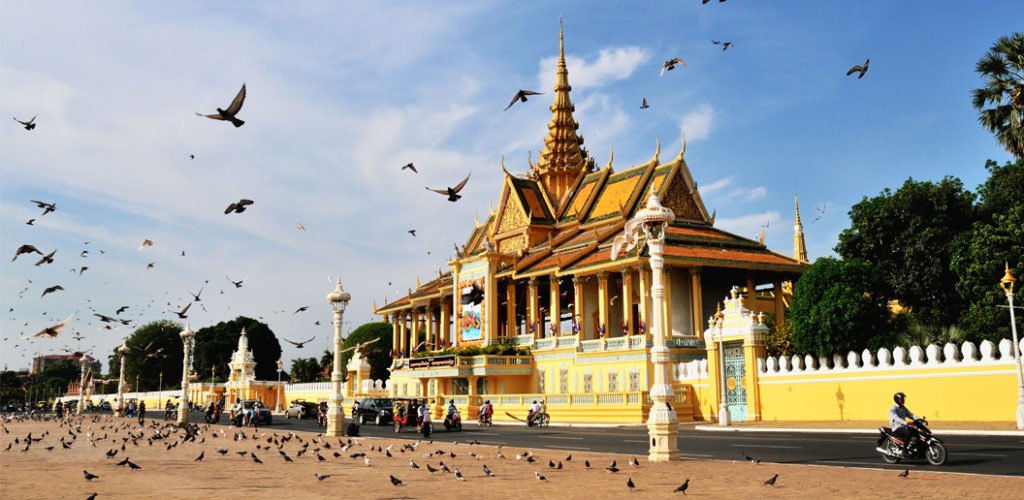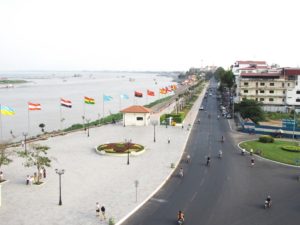 Located on the banks of the Tonle Sap and the Mekong river which provide freshwater and natural resources to its 1.5 million inhabitants, is Cambodia’s capital and centre of industrial activities and cultural heritage, the mystical city of Phnom Penh. The capital is located in the south-central region of Cambodia, and is fully surrounded by one of the main provinces known as, the Kandal Province.
Located on the banks of the Tonle Sap and the Mekong river which provide freshwater and natural resources to its 1.5 million inhabitants, is Cambodia’s capital and centre of industrial activities and cultural heritage, the mystical city of Phnom Penh. The capital is located in the south-central region of Cambodia, and is fully surrounded by one of the main provinces known as, the Kandal Province.
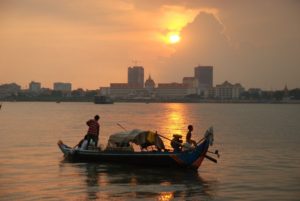 The legend of the founding of Phnom Penh tells the story of a local woman, Penh, who lived at what used to be known as the chaktomuk, or what was going to be the future Phnom Penh. While gathering firewood along the banks of the river, Lady Penh encountered a floating koki tree in the river and picked it out from the water. Inside the tree, she found four beautiful Buddha statues and one of Vishnu, Hindu God of creation, upkeep and destruction. The discovery was taken as a divine blessing, and to some a sign that the Khmer capital was to be brought to Phnom Penh from Angkor. To give the new found sacred objects an adequate place, Penh raised a small hill on the west bank of the Tonle Sap River and crowned it with a shrine, known today as Wat Phnom, which is still found today at the north end of central Phnom Penh. ‘Phnom’ is Khmer for ‘hill’ and Penh’s hill took on the name of the founder, and the area around it became known after the hill – Phnom Penh.
The legend of the founding of Phnom Penh tells the story of a local woman, Penh, who lived at what used to be known as the chaktomuk, or what was going to be the future Phnom Penh. While gathering firewood along the banks of the river, Lady Penh encountered a floating koki tree in the river and picked it out from the water. Inside the tree, she found four beautiful Buddha statues and one of Vishnu, Hindu God of creation, upkeep and destruction. The discovery was taken as a divine blessing, and to some a sign that the Khmer capital was to be brought to Phnom Penh from Angkor. To give the new found sacred objects an adequate place, Penh raised a small hill on the west bank of the Tonle Sap River and crowned it with a shrine, known today as Wat Phnom, which is still found today at the north end of central Phnom Penh. ‘Phnom’ is Khmer for ‘hill’ and Penh’s hill took on the name of the founder, and the area around it became known after the hill – Phnom Penh.
Phnom Penh is blessed with a much desired weather from the west which consists of tropical wet and dry climate. This means that the city is hot all year round with minor variations throughout the year and according to the season. The rainy season tends to fall on the months from May to October and the dry season goes on from January to February.
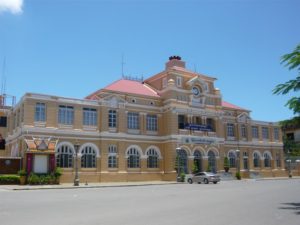 Phnom Penh stands out amongst all cities in South East Asia due to the aesthetic and historical architecture of surviving French colonial buildings as well as the many culture oriented attractions it has to offer stemming from its rich historical background. The oldest structure is Wat Phnom from the founding days of the city, constructed in 1373.
Phnom Penh stands out amongst all cities in South East Asia due to the aesthetic and historical architecture of surviving French colonial buildings as well as the many culture oriented attractions it has to offer stemming from its rich historical background. The oldest structure is Wat Phnom from the founding days of the city, constructed in 1373.
The wealthiest and biggest city of Cambodia has a lot to offer. The main tourist attractions are the Royal Palace with the Silver Pagoda, and the National Museum, constructed during the French colonial era in the late 19th century in the classical Khmer style and hosting a vast collection of Khmer antiquities.
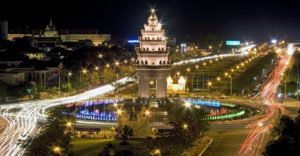 The French, who were the colonial masters from the 19th century to the 1940s, made sure to leave their mark around the city. They did so by establishing various colonial villas, impressive French churches, romantic boulevards, and the famous Art Deco market Phsar Thom Thmei. Another notable landmark of the colonial era, specifically 1929, is the Hotel Le Royal situated one kilometre away from Wat Phnom Temple and the Art Deco market. This is a venue where passers-by can enjoy the fabulous Cambodian style décor while enjoying a meal at the hotel’s famous restaurant which serves French and Cambodian fusion cuisine or enjoy an alcoholic beverage at their iconic cocktail bar. The history books have said it, and it was the possibly unfortunate French colonization in Cambodia, which allowed Phnom Penh to be considered one of the most beautiful French-built cities in Indochina.
The French, who were the colonial masters from the 19th century to the 1940s, made sure to leave their mark around the city. They did so by establishing various colonial villas, impressive French churches, romantic boulevards, and the famous Art Deco market Phsar Thom Thmei. Another notable landmark of the colonial era, specifically 1929, is the Hotel Le Royal situated one kilometre away from Wat Phnom Temple and the Art Deco market. This is a venue where passers-by can enjoy the fabulous Cambodian style décor while enjoying a meal at the hotel’s famous restaurant which serves French and Cambodian fusion cuisine or enjoy an alcoholic beverage at their iconic cocktail bar. The history books have said it, and it was the possibly unfortunate French colonization in Cambodia, which allowed Phnom Penh to be considered one of the most beautiful French-built cities in Indochina.
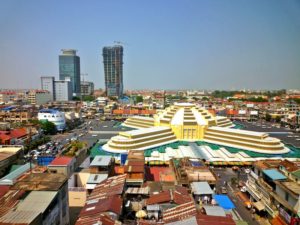 Phnom Penh is also known for its influence on New Khmer Architecture. Starting with independence from the French in the 1950s and lasting until the era of the Khmer Rouge in the 1970s, Phnom Penh underwent tremendous growth as the capital city of a newly independent country. King Sihanouk, who was reigning at the time, was eager to present a new style of architecture and thus stimulate the process of creating a bold, strong and unique nation. This is what allowed a new golden era of architecture to take off, with various projects and young Khmer architects, often educated in France, given opportunities to design and construct. This new movement was called “New Khmer Architecture” and was often characterised by a fusion of Bauhaus using a combination of crafts and fine arts, European post-modern architecture, and traditional elements from Angkor, the capital city of the Khmer Empire from the 9th to the 15th century.
Phnom Penh is also known for its influence on New Khmer Architecture. Starting with independence from the French in the 1950s and lasting until the era of the Khmer Rouge in the 1970s, Phnom Penh underwent tremendous growth as the capital city of a newly independent country. King Sihanouk, who was reigning at the time, was eager to present a new style of architecture and thus stimulate the process of creating a bold, strong and unique nation. This is what allowed a new golden era of architecture to take off, with various projects and young Khmer architects, often educated in France, given opportunities to design and construct. This new movement was called “New Khmer Architecture” and was often characterised by a fusion of Bauhaus using a combination of crafts and fine arts, European post-modern architecture, and traditional elements from Angkor, the capital city of the Khmer Empire from the 9th to the 15th century.
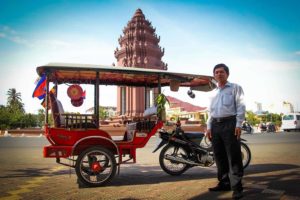 In order to truly enjoy the Phnom Penh experience, one may choose to visit the capital during Chaul Chnam Thmey which usually occurs from mid-April. During these days, Phnom Penh celebrates the Cambodian New Year, an occasion which has with time gotten increasingly popular amongst tourists. During this time, which is typically the hottest part of the year, the game is to throw water around, which adds to the party atmosphere along with stress release dancing and music beats from all over. The precise dates of new Year changes year-by-year since it is guided by the Lunar calendar, but this holiday lasts, at least, three days. This festival marks the turn of the year based on the ancient Khmer calendar and also marks the end of the prior year harvest.
In order to truly enjoy the Phnom Penh experience, one may choose to visit the capital during Chaul Chnam Thmey which usually occurs from mid-April. During these days, Phnom Penh celebrates the Cambodian New Year, an occasion which has with time gotten increasingly popular amongst tourists. During this time, which is typically the hottest part of the year, the game is to throw water around, which adds to the party atmosphere along with stress release dancing and music beats from all over. The precise dates of new Year changes year-by-year since it is guided by the Lunar calendar, but this holiday lasts, at least, three days. This festival marks the turn of the year based on the ancient Khmer calendar and also marks the end of the prior year harvest.
Another pleasant month to visit Phnom Penh in is November, when the largest annual festival in Phnom Penh takes place. It is a lively gathering which celebrates the reversing of the flow of the Tonle Sap river. The holiday lasts three days as people flood into the city to enjoy the fireworks, colourful boat races, live concerts, eating and partying. A new activity for foreginers may be the boat racing, which dates back to ancient times marking the strengths of the Khmer marine forces during the Khmer Empire.
Another side of Phnom Penh which enriches you culturally and helps the average tourist truly understand and empathize both what made the city great and what made it suffer are the monuments and memorials to the genocide during the Khmer Rouge era in the 1970s. First of all, the National Museum, which is Cambodia’s most visited museum and provides historical and cultural background of the entire country. Other settings are the Tuol Sleng Genocide Museum, a former Khmer Rouge prison, which used to be a high school and was used as a concentration camp. On the outskirts of the city, one can visit the Choeung Ek Genocidal Centre which depicts as historically accurately and concisely as possible and gives its audience a deeper understanding of the many atrocities that once occurred in the land of Cambodia. Another important site to visit is the Cambodia-Vietnam Friendship Monument, which was commissioned by the Vietnamese communists as symbol of Khmer-Vietnamese friendship during the late 1970s following the liberation of Cambodia from the Khmer Rouge.
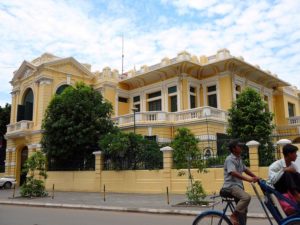 Finally, Phnom Penh is a city which must be tasted slowly, its profound history, its rich architecture, its invigorating culture, and its delicious food. The city is notable for Ka tieu, Phnom Penh’s variation on rice-noodle soup, a dish available in sit-down cafes as well as ‘street’ cafes. Other must try dishes are the simple yet delicious Bai Sach Chrouk, which is basically thinly sliced pork slowly grilled over warm coals with rice. Fish Amok, one of the famous Cambodian dishes, a fish mousse made with fresh coconut milk and spiced with local herbs which create irreplaceable subtle bitter flavours. The Khmer Red Curry is also a must try, palette friendly for the west since it’s not as spicy as the curries found in neighbouring countries the dish can be made with beef chicken or fish and includes eggplant, green beans, potatoes, coconut milk, and the refreshing lemongrass. And to wash it all down, a typical sweet desert. In Phnom Penh the young love Cha Houy Teuk which is basically a jelly dessert made with sticky rice drenched in coconut milk and topped off with condiments such as taro, red beans, pumpkin or jackfruit.
Finally, Phnom Penh is a city which must be tasted slowly, its profound history, its rich architecture, its invigorating culture, and its delicious food. The city is notable for Ka tieu, Phnom Penh’s variation on rice-noodle soup, a dish available in sit-down cafes as well as ‘street’ cafes. Other must try dishes are the simple yet delicious Bai Sach Chrouk, which is basically thinly sliced pork slowly grilled over warm coals with rice. Fish Amok, one of the famous Cambodian dishes, a fish mousse made with fresh coconut milk and spiced with local herbs which create irreplaceable subtle bitter flavours. The Khmer Red Curry is also a must try, palette friendly for the west since it’s not as spicy as the curries found in neighbouring countries the dish can be made with beef chicken or fish and includes eggplant, green beans, potatoes, coconut milk, and the refreshing lemongrass. And to wash it all down, a typical sweet desert. In Phnom Penh the young love Cha Houy Teuk which is basically a jelly dessert made with sticky rice drenched in coconut milk and topped off with condiments such as taro, red beans, pumpkin or jackfruit.
Phnom Penh will not disappoint. The city is both the economic and cultural centre of Cambodia; Music and the Arts are making a strong and impactful revival throughout Cambodia, especially in Phnom Penh which currently hosts a number of music events throughout the city. ‘Indie’ bands have grown in number and exploring the city is as enriching as one can imagine. The city’s large impressive temples, the maze like palaces, the fragments of its French colonial history and a history which has left deep scars are a combination unlike any other. Phnom Penh is an “It” city and is awaiting to be rediscovered.


